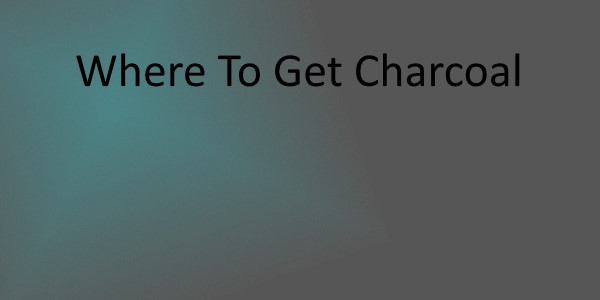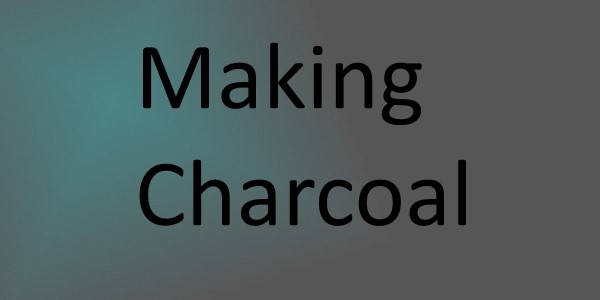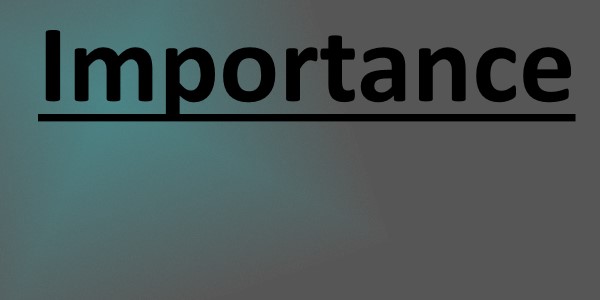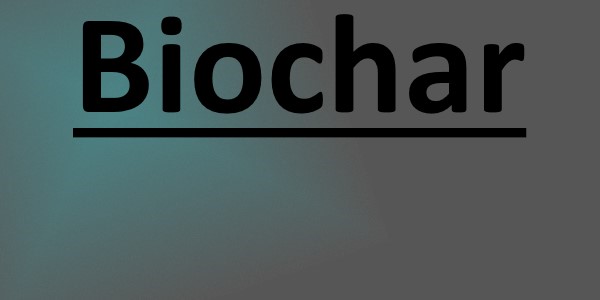
Wondering where to get charcoal? Wondering what it is, what are it’s properties, and how it’s made?
It’s possible to buy charcoal from a number of sources. Charcoal briquettes may be bought at many brick and mortar stores. Grocery stores often carry briquettes in their grilling sections. If you don’t want to make the trip, it is also very easy to buy charcoal briquettes on amazon.
Lump charcoal is a little harder to find, but can still be bought at quite a few physical store locations. If you simply type “where to buy lump charcoal” into google, google maps should pop up and show you some nearby locations.
If you are looking for where to buy blacksmithing charcoal, it will most likely be easiest to just purchase it online. Blacksmithing charcoal has special characteristics, and it’s important to be cognizant of your needs.
Charcoal
If you just need some charcoal for grilling, your options are similar to above. Instead of going over how to find them locally again, I will go over some online options found on amazon.
Kingsford Original Charcoal Briquettes:https://www.amazon.com/Kingsford-Original-Charcoal-Briquettes-16-7/dp/B00N6XC8D0/ref=sr_1_14?ie=UTF8&qid=1515450437&sr=8-14&keywords=charcoal
This is briquette charcoal that is commonly used for backyard grilling. The default option is for two 16.7 pound bags. There are additional bulk options that offer a modest discount for large purchases. I have used these myself, and they light very easy under a variety of weather conditions when used with lighter fluid. They are made with natural ingredients and are usually ready for grilling within 15 minutes or so. This is generally my go-to if i need some quick charcoal for grilling.
Kingsford Match Light Charcoal Briquettes, 6.2 lb:https://www.amazon.com/Kingsford-Match-Charcoal-Briquettes-Pounds/dp/B01IUIY4ZU/ref=sr_1_27?ie=UTF8&qid=1515450437&sr=8-27&keywords=charcoal
These are similar to the bags shown above, but they are easier to light as they don’t require lighter fluid. These contain compounds that aid in lighting and are also quicker to turn white, mean you may begin grilling quicker!
Cheap Lump Charcoal
Hardwood lump charcoal is different from the briquettes in that it is made from wood being burned for a long period of time in a low oxygen environment. This process burns off many of the chemical components of the wood, and leaves a lump that is 50%-95% carbon.
Many people like lump charcoal because it is made by simply burning wood, while the briquettes are made in a manufacturing process that includes adding other materials such as corn starch, see the video below to see how briquettes are made:
https://www.youtube.com/watch?v=RjFNAKugkv0
Lump charcoal tends to burn hotter than the briquettes, and some people prefer the flavour they give off. Lump charcoal may be used for grilling, as well as some metallurgical hobbies such as backyard blacksmithing.
At the time of this writing, another great lump charcoal product is The Jealous Devil All Natural Lump Charcoal:https://www.amazon.com/Jealous-Devil-Charcoal-Restaurant-Grilling/dp/B01D5DDT0G/ref=sr_1_5?s=lawn-garden&ie=UTF8&qid=1515451131&sr=1-5&keywords=charcoal This charcoal is 100 % natural and contains no chemicals, fillers, or scrap wood. This is not cheap charcoal, It is restaurant quality. The superior materials of this charcoal means that there is less smoke, sparks, and ash. This means less hassle and less time spent cleaning up!
If you are environmentally conscious, you may want to also consider Eco Charcoal:https://www.amazon.com/Eco-Charcoal-20-Pound-Natural-Hardwood/dp/B01DHKD43Y/ref=sr_1_24?s=lawn-garden&ie=UTF8&qid=1515451131&sr=1-24&keywords=charcoal This charcoal is made from tree trimmings marked for removal and is more sustainable for the environment.
Finally, if you are looking for charcoal for blacksmithing, you may want to consider using Bituminous coal instead of charcoal. While hardwood charcoal may work for your projects, the carbon content of cheap charcoal can vary wildly, making your forge fires harder to control. Bituminous coal is a viable alternative. I will go into more detail about the differences between charcoal and bituminous coal later. For now, I recommend taking a serious look at:https://www.amazon.com/Blacksmithing-Heating-Coal-Mined-America/dp/B06XVJ4Q9T/ref=sr_1_1?ie=UTF8&qid=1515451083&sr=8-1&keywords=blacksmithing+charcoal
The blacksmithing coal produced by LU is a popular product on amazon. It is made of High Quality Bituminous Coal, and can be used for: blacksmithing, melting metals in a foundry, model railroading, burning fireplaces, and heating a blast furnace. It also make a hilarious gag gift at christmas time!
This stuff lasts much longer than charcoal. If it is properly attended to, it can burn for up to 24 hours. You may control the burning temperature of the coal by altering the airflow you provide. More air provides a higher burning temperature. Less air lowers the burning temperatures. As Always, make sure you work in an environment with proper ventilation. Coal is quite a bit more dense(efficient to burn) than charcoal, but it may be dirtier. Watch out for coal with a high sulfur content.

Charcoal Making Process
Charcoal is made by cooking certain organic matter in a low oxygen environment. This cooking process is known as pyrolysis. The most common type of organic matter used is wood, although some companies are now building charcoal out of coconut shells and other carbon containing material. This pyrolysis process may take days depending on the method used, and burns off volatile compounds such as tar, methane, hydrogen, and water. For every 5 tons of wood burned, one ton of charcoal is created. The “quality” of charcoal depends on the efficiencies related to its intended uses. Some specifications for charcoal creation have roots in the steel and chemical industries.
Charcoal that is considered high quality is often produced from wood that has higher levels of lignin and lower levels of holocellulose and extractives in wood.This creates charcoal that has higher levels of fixed carbon, and lower levels of ash and volatiles.
Properties Of Charcoal
Charcoal is a brittle substance that is composed of carbon, ash, and moisture. Charcoal has a very dark color, and has a tendency to stain everything it touches black. Some claim that charcoal is useful for removing odors. Charcoal is highly porous, which is an important property as it affects charcoals ability to soak up water. This porosity also makes charcoal relatively light in weight, although precise measurements of density may vary greatly depending on the techniques and materials used.
Moisture Content Of Charcoal
Moisture is an important property of charcoal because it affects the heating capabilities of charcoal. The moisture content of charcoal will typically fluctuate throughout the duration of its existence. Charcoal fresh out of the kiln/retort will typically have moisture near 1%. This does not last, as charcoal soaks up environmental humidity very quickly, and will often rise to 5-10%. Charcoal with a high ability to absorb water(hygroscopicity), may have moistures levels up to 15%. High quality charcoal will have a moisture content that consists of 5-15% of the charcoals weight.
Ash Content Of Charcoal
Charcoals ash content may vary from 0.5% to 5%. Good charcoal tends to have an ash content of about 3%. Ash is determined by heating a weighed sample to red heat with access ai to burn away all combustible matter. The residue of this process is the ash, and it is composed of mineral matter such as clay, silica, calcium, and magnesium oxide.This mineral matter is present in the original wood and is picked up from the earth during processing. Fine charcoal may have a higher ash content, but screening out small particles in the charcoal may lower the ash content.
How Hot Does Charcoal Burn?
According to wikipedia, charcoal can burn extremely hot at temperatures up to 2,400 Celsius or 4,890 Fahrenheit. I would like to point out that such extreme temperatures require a special setup, and most grilling operations would yield a much lower temperature. If I had to hazard a guess, briquette grills would likely be in the 500 Fahrenheit range, while lump charcoal may get even hotter. The airflow applied to charcoal in burning situations affects what temperature the charcoal burns at. The porous nature of charcoal is a factor in this sensitivity to air. Increasing airflow to the charcoal will increase its temperature. In contrast, lowering airflow to the charcoal will lower its temperature.

Importance Of Charcoal
Charcoal has many uses, and it’s overall usage has changed over time. Charcoal is a good store of energy, and by burning it craftsman and industrialists can use the heat energy created by burning the charcoal to accomplish incredible feats such as bending metal or creating steel. As such, It’s most important use historically has been for metallurgical fuel. The intense heat generated by the burning of charcoal has been used by blacksmiths since roman times. It’s sensitivity to airflow has provided these metalsmiths the heat control necessary for fine craftsmanship.
Charcoal has also been used for art, as charcoal creates a characteristically distinct black pigment. Charcoal was also important to early chemists, and was used in the creation of black powder. Black powder, also known as gunpowder, is a mixture of sulfur, charcoal, and potassium nitrate(saltpeter). The sulfur and charcoal act as fuels while the saltpeter performs the role of an oxidizer. Due to the high surface area of charcoal, it has also been used as a filter,catalyst, or as an adsorbent.
Charcoal also played a large role in the industrial revolution. It was used in great quantities for smelting iron in bloomeries. Later, charcoal was used by blast furnaces and finery forges. Due to the high demand for charcoal during these time periods, some governments had to institute regulations intended to stop the rampant deforestation. In the 19th century, charcoal was gradually replaced by coke in steel production due to cost. I will go into the difference between charcoal, coke, and coal later on in this article.
Charcoal Uses In Industry
While historically usage was largely related to metallurgy, there are plenty of modern uses for charcoal as well. While charcoal is still used for heating purposes such as grilling or for hobbyist blacksmith shops, it has a number of non metallurgical applications as well. As an extension of its use in black powder, charcoal is often used in firework production as well. When it is used for fireworks, it is often ground into a fine powder, with airfloat grade being the finest particle size available commercially. When charcoal is used for fireworks, it is often ball-milled with other ingredients so that everything in the composition is well mixed.
Charcoal is also used in certain purification and filtration processes. Charcoal may be activated to increase its effectiveness as a filter. Active charcoal is a form of carbon which is processed to have small pores that increase the surface area of the charcoal immensely. This increased surface area increases adsorption in chemical reactions. This makes activated charcoal useful for certain industrial processes, such as the purification of sucrose from cane sugar. Activated charcoal can also be used to absorb odors, colors, and toxins in gases. Activated charcoal is also used in some gas masks, and has a number of reported medical uses.
Another material often used in purification and filtration processes is bone char. This is another black, porous material that is made from charred animal bones. It has a much lower carbon content than charcoal, and is primarily composed of tricalcium phosphate and calcium carbonate. Historically bone char was used in the sugar refining process to decolorize the sugar. This practice has fallen out of favour due to price and the concerns of vegetarians and vegans.
As was mentioned briefly earlier, charcoal is often used in art. This is particularly true for drawing. There are a number of different mediums for charcoal based art. One is Vine charcoal, which is created by burning sticks or vines. Powdered charcoal may be used to tone or to fill large spaces on a drawing surface. Powdered charcoal is handy as it is easy for the artists to control the amount of shading that occurs. Compressed charcoal is a charcoal powder that is mixed with a gum binder and is then compressed into round or square sticks.

Biochar For Gardening
Another possible use for Charcoal is in horticulture. Some believe that pre-Columbian natives may have used charcoal to improve the soil they farmed on. This technique is being studied by modern scientists, and may be a possible way of improving soil health in addition to being a means of carbon sequestration.
The type of charcoal used for farming purposes is known as biochar. Like charcoal, biochar is made from the pyrolysis of biomass. Biochar has many properties similar to normal charcoal, and can be used with study to improve the soil of acidic soils by making them more basic.
Some believe that creating biochar may be an effective process for carbon sequestration. Carbon sequestration is the process of capturing and storing atmospheric carbon dioxide. Carbon sequestration has been proposed as one way of reducing the accumulation of greenhouse gases. It has been proposed that biochar can sequester carbon in the soil for hundreds of years, much like coal. Some experts have estimated that a sustainable program of biocharring could reduce the global net emissions of carbon dioxide, methane, and nitrous oxide by 12% of current emissions without endangering food security, soil conservation, or habitat. It should be noted, that at the time of this articles writing, no current biochar projects have made a significant impact on the overall global carbon budget.
Biochar is also excellent at retaining water and water-soluble nutrients. This ability to retain water stems from biochars porous composition. Some also believe that biochar provides a beneficial habitat for many soil microorganisms.
If you are wanting to experiment with biochar for gardening/farming, please conduct further research beyond this article. There is a lot of research being done on biochar, so make sure you are as educated as possible before considering the use of biochar in your own soil.
What Is The Difference Between Charcoal And Coal?
It’s easy to see what people confuse coal and charcoal, both are black, primarily composed of carbon, and are burned to release heat and energy. In addition to that, both have the word coal in them. They are not the same thing however. Charcoal is the result of an industrial process, mainly, the pyrolysis of hardwood. While coal is the result of a geological process. I have already spoken about charcoal at length, so let’s now examine coal in more detail.
In order to “make” coal, you need have large amounts of vegetation get buried underneath the soil. This may happen as a result of flooding. Over time, more soil, rock, and sediment is deposited over the already buried vegetation. This compresses the vegetation and pushes it further into the earth where temperatures are higher. As this process continues, the vegetation is protected from biodegradation and oxidation. Under high temperatures and extreme pressure, this plant matter is eventually turned into coal.
Not all coal is the same however, there are different grades of coal. The grade of coal depends on the geological forces to which the biomass was subjected too. Generally speaking, the deeper the coal is found, the higher it’s ranking. The most common types of coal from lowest to highest metamorphic grade are as follows: Peat, Lignite, Sub-bituminous coal, Bituminous coal, Steam coal, Anthracite, and finally graphite.
History of Charcoal
Humans have been using and producing charcoal for at least as long as we have been writing. I have seen some sources claim that charcoal production began as far back as 6000 years ago. Charcoal producers often lived in heavily wooded areas, as the primitive transportation technology of the time made it uneconomical to produce it elsewhere; In addition, charcoal is much lighter than the hardwood it’s made from. As with modern charcoal making, primitive methods of charcoal production involved burning hardwood lumber in a low oxygen environment. The first step in this ancient process was to create a large pile of wood. This pile of wood was generally billeted, and took on the shape of a cone. A central air shaft was left in the middle of the pile, and small openings were left at the base of the pile to allow air to escape during the burning phase. After the air vents were created, the pile of wood was covered with turf or moistened clay. The firing begins at the base of the flue, and spreads gradually. Economical production of charcoal was tricky, so it is believed that its production was left for specialists. This charcoal provided a lightweight and long lasting form of heating fuel, which would be critical in colder climates.
I’m not affiliated with video creator, but if you are interested in seeing a variation of this process, check out the video below from the channel called Primitive Technology. Notice how in his charcoal production process, he doesn’t have the air vents at the bottom. I believe this may be because he was making charcoal just for himself, and he didn’t need to produce it in a larger more industrial setup.
Conclusion
If you made it through this entire article, you are a damn champion. I’m going to assume that you find charcoal interesting, so I highly recommend you check out the following resource: http://www.fao.org/docrep/X5328E/x5328e00.htm#Contents. Charcoal is an intriguing part of the economy and has been used for both recreational and industrial purposes. It is a fuel source that has been used across the globe throughout human history including today. In some parts of the world, charcoal is still used as the primary fuel source! I hope you have found the answer to your query, and as always, thank you for visiting the Gallivanting Craftsman!